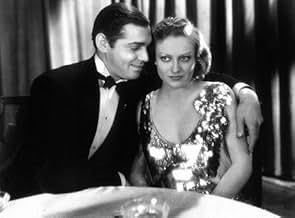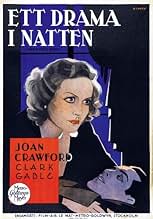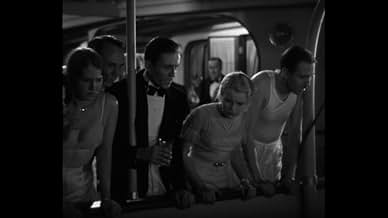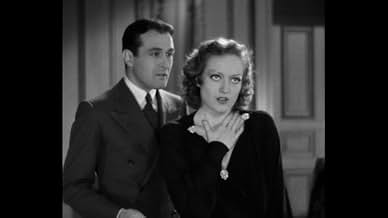Nach dem Tod ihres Vaters und dem Verlust des Familienvermögens nimmt Bonnie (Joan Crawford) einen Job als junge Reporterin an, während ihr Bruder (William Bakewell) in den Alkoholschmuggel ... Alles lesenNach dem Tod ihres Vaters und dem Verlust des Familienvermögens nimmt Bonnie (Joan Crawford) einen Job als junge Reporterin an, während ihr Bruder (William Bakewell) in den Alkoholschmuggel verwickelt wird.Nach dem Tod ihres Vaters und dem Verlust des Familienvermögens nimmt Bonnie (Joan Crawford) einen Job als junge Reporterin an, während ihr Bruder (William Bakewell) in den Alkoholschmuggel verwickelt wird.
- Auszeichnungen
- 1 wins total
- Wally
- (as Earl Foxe)
- Parker
- (as Purnell B. Pratt)
- Luva's Henchman
- (Nicht genannt)
- Albert
- (Nicht genannt)
- Yacht Waiter
- (Nicht genannt)
- Clinton
- (Nicht genannt)
- Chorus Girl
- (Nicht genannt)
- Reporter
- (Nicht genannt)
Empfohlene Bewertungen
You can probably guess what I love about Crawford's character. She's a modern woman who looks great out on the dance floor, believes in "trying love out on approval" (a scene which clearly signals pre-marital sex), and would rather work and be independent than settle for the traditional role of wife. Her brother is incredulous, leading to this exchange:
Bonnie (Crawford): "I'm not going to do any of those stupid, silly, conventional things. You'd be surprised what a girl can earn when she sets her mind to it. I'm no dud." Rodney (Bakewell): "You've got the looks, kid. Trade on 'em. Open up a beauty parlor. ..." Bonnie: "That's your idea of me, huh? Beautiful but dumb. All right, I'll show you. I'm going out to get a man-sized job."
That second dance she does when she's working undercover in the gangster's nightclub to get a story is delightful and evokes the flapper era, but to me the feminism in the film is what makes it a solid film, despite its basic plot. Crawford is not known for her on-screen charm, but she summons it here, and does well in the various aspects of her role - society woman, flapper, newspaper reporter, and love interest (hey, the complete woman). Gable is suitably tough as the gang leader, and he and Crawford have great chemistry together. I didn't care for the contrived confrontation which occurs and how the film ends though, which was really unfortunate, and kept it from a higher rating.
Another quote, from Gable to Crawford after her dance: "You got me going, sister." "Can I depend on it?" "In a big way."
In the 30s, Hollywood had a knack for churning out one entertaining *and* enlightening audience-pleaser after another, all without wasting a frame of film. Dance, Fools, Dance -- one of *four* films that Harry Beaumont directed in 1931 -- is barely 80 minutes long, yet its characters are well developed, its story never seems rushed, and despite its many twists in plot, the audience is never left behind.
With the lone exception of Lester Vail as flaccid love interest Bob Townsend, the supporting cast is uniformly strong. Worthy of note are William Bakewell as Crawford's brother, Cliff Edwards (best known as the voice of Jiminy Cricket) as reporter Bert Scranton, and Clark Gable in an early supporting role as gangster Jake Luva.
But this is Joan Crawford's film, and she absolutely shines in it. Made when she was just 27, this lesser-known version of Crawford will probably be unrecognizable to those more familiar with her later work. However, here is proof that long before she took home an Oscar for Mildred Pierce, Crawford was a star in the true sense of the word, a terrific actress with the charisma to carry a picture all by herself.
Score: EIGHT out of TEN
But none of this is supposed to be taken seriously - it's all good fun from those wonderful pre-code days, when Hollywood was really naughty. Joan looks great, and displays much of the emotional range that would give her career such longevity (thank God she stopped the dancing!). Gable is remarkable as a slimy gangster - he wasn't a star yet and so didn't have to be the hero. Great to see him playing something different. And William Bakewell is excellent as the poor confused brother. And there are some great montages and tracking shots courtesy of director Harry Beaumont, who moves the piece on with a cracking pace - and an occasional wink to the audience! Great fun!
The other option for employment seemingly was to become a journalist - perhaps not such an easy option but unlike her brother's unwise career plan, that's what Joan Crawford's Bonnie does when they become broke. Incidentally, women journalists and women writers, especially in Hollywood, although the exception were not that uncommon. Indeed the writer of this film, Aurania Rouverol, was a noted female playwright.
As a work of fiction, this is perhaps Miss Rouverl's greatest achievement. The plot is quite nonsensical but in the magical hands of Irving Thalberg's team at MGM, you're swept along with this stupid story, accepting it all as perfectly normal.
MGM was the last of the studios to make the switch from silents to sound and as such talking pictures were still a novelty to the studio when this was made. This is very much evident with this. The most sophisticated and classiest silent films were often from MGM and they couldn't abandon that style they'd built up over all those years so easily. Like in the 20s, in this film, faces and expressions are used to tell the story and nobody was better at that than Joan Crawford. The story allows her to really develop her character and her experience one of the leading silent stars ensures first rate acting.
Clark Gable, in one of his very first roles is only swaggering around for about twenty minutes but he makes quite an impact. Although he is a one-dimensional nasty piece of work, he has an electrifying presence. His on-screen (and subsequent off-screen) romance with Miss Crawford also gives this film an authentic undercurrent of sexual tension. This and the overall high standard of acting (much better than in some other offerings from 1931) again helps to keep this crazy plot seem real. Even so, as a motion picture, it doesn't quite hit the mark but is nevertheless still entertaining.
Wusstest du schon
- Wissenswertes"Dance, Fools, Dance" is clearly based on two infamous incidents in Chicago crime history: the 1929 St. Valentine's Day Massacre in a garage and the June 9, 1930 murder of Chicago Tribune reporter Jake Lingle, who was shot while heading to a train station. However, unlike the movie's Bert Scranton, Lingle was a shady character who played both sides of the law and had parlayed a $65 a week salary into a $60,000 income. In journalistic terms, Lingle was known as a legman who would telephone in the salient details of the story which would be actually written by a rewrite man. This is what happens when Joan Crawford's Bonnie phones in her story after the shootout.
- PatzerWhen in the newsroom Scranton tells Bonnie that if they had a chance they would cut the Lord's Prayer to a one-line squib and he quotes, "Now I lay me down to sleep". But the line is not from the Lord's Prayer, it is actually the first line and title of the bedtime prayer, "Now I Lay Me Down To Sleep".
- Zitate
Bob: You know I'm very much in love with you, don't you?
Bonnie: Are you?
Bob: I'm crazy about you, and you know it.
Bonnie: I didn't know.
Bob: Well, you know it now. What about it?
Bonnie: That's it... what?
Bob: Going to make me stand on ceremony?
Bonnie: You think I'm so old-fashioned?
Bob: I hope not.
Bonnie: You're right. I'm not. I believe in... in trying love out.
Bob: On approval?
Bonnie: Yes, on approval.
[they kiss as the scene fades out]
- VerbindungenEdited into Hollywood: The Dream Factory (1972)
- SoundtracksPiano Sonata No. 14 in C sharp minor, Op. 27 No. 2 'Moonlight'
(1800-01) (uncredited)
Written by Ludwig van Beethoven
Played on piano by Natalie Moorhead
Reprised on piano by Joan Crawford in a swing version
Top-Auswahl
Details
- Erscheinungsdatum
- Herkunftsland
- Sprache
- Auch bekannt als
- Dance, Fools, Dance
- Drehorte
- Produktionsfirma
- Weitere beteiligte Unternehmen bei IMDbPro anzeigen
Box Office
- Budget
- 234.000 $ (geschätzt)
- Laufzeit
- 1 Std. 20 Min.(80 min)
- Farbe
- Seitenverhältnis
- 1.20 : 1


































